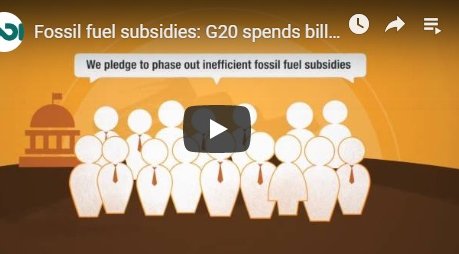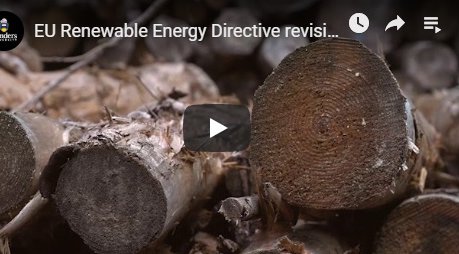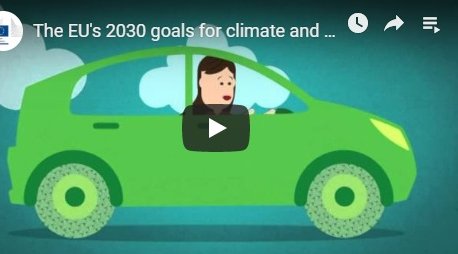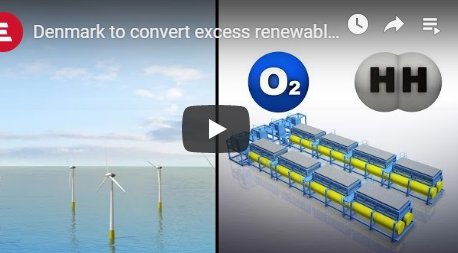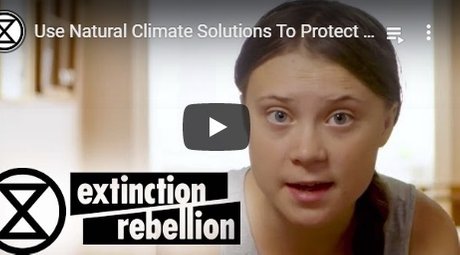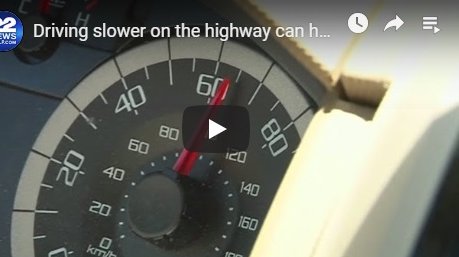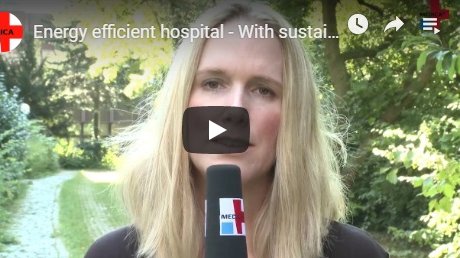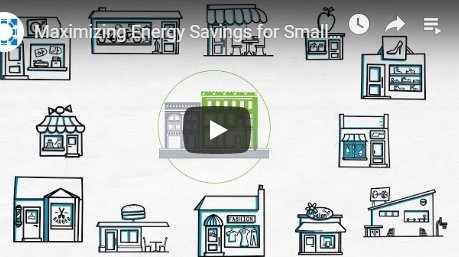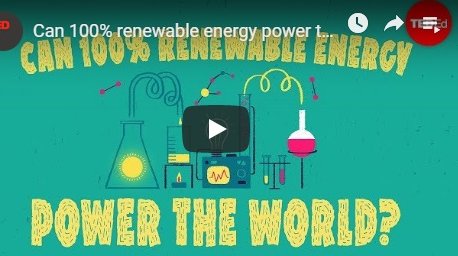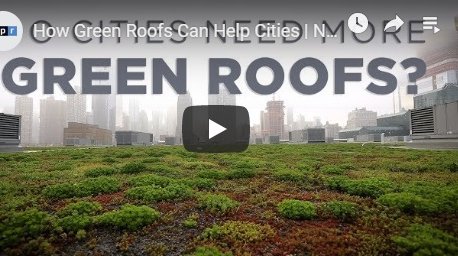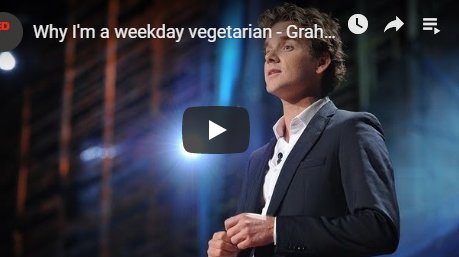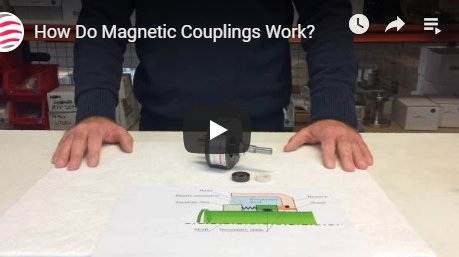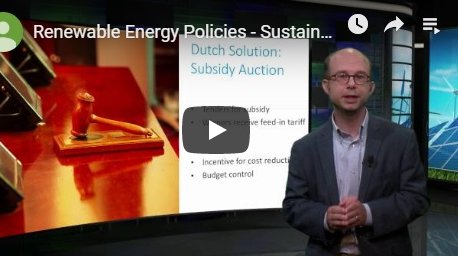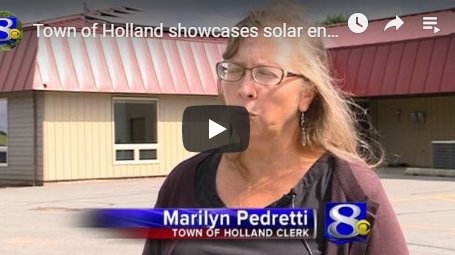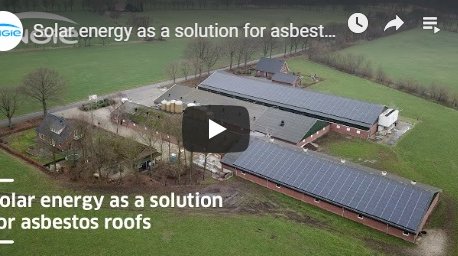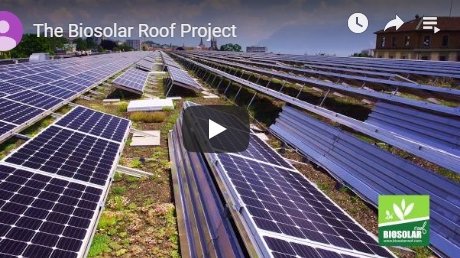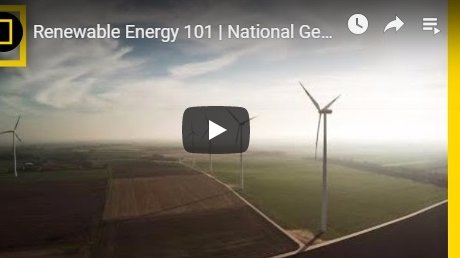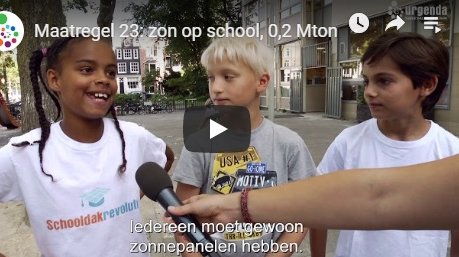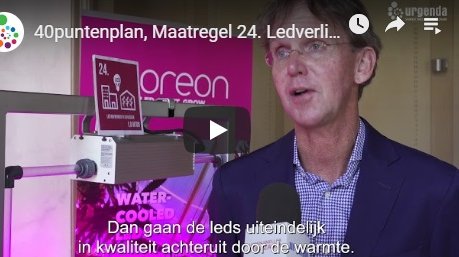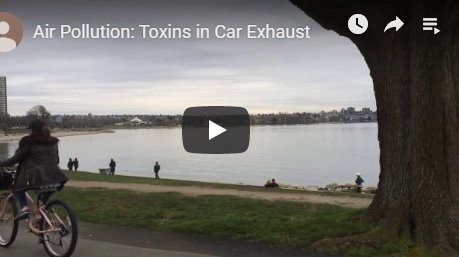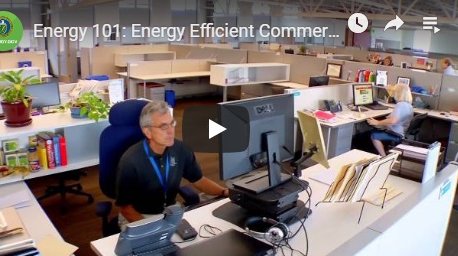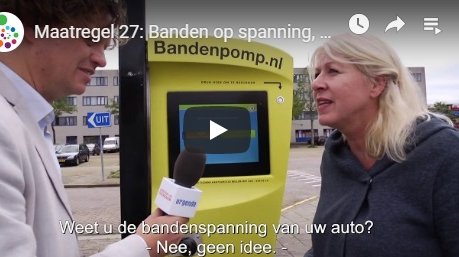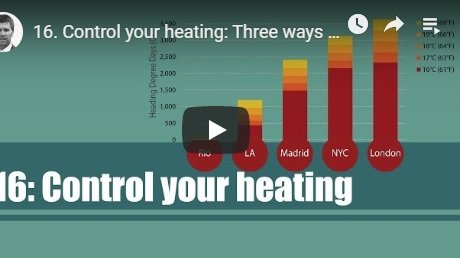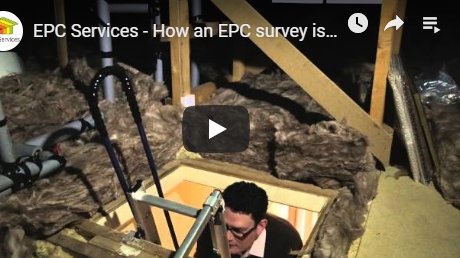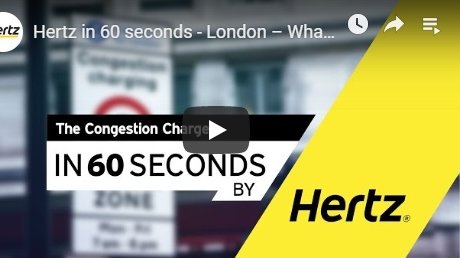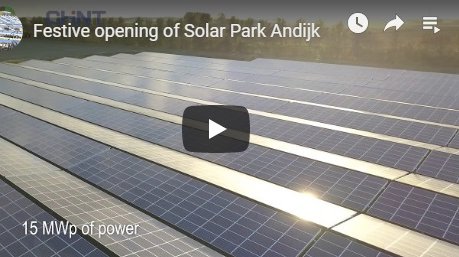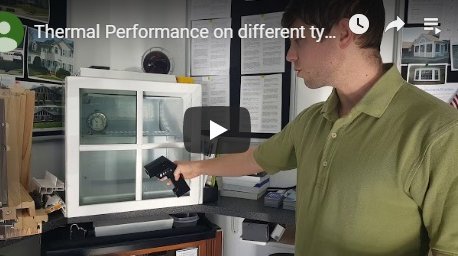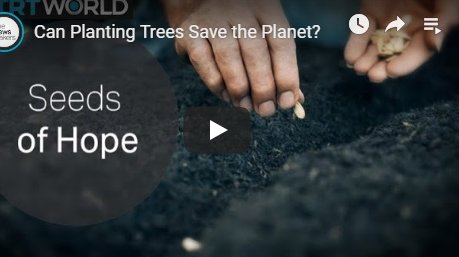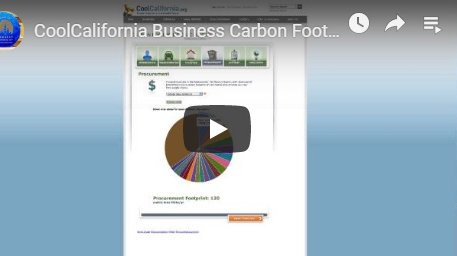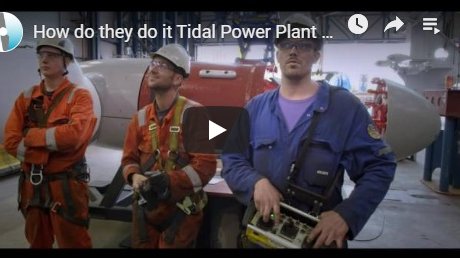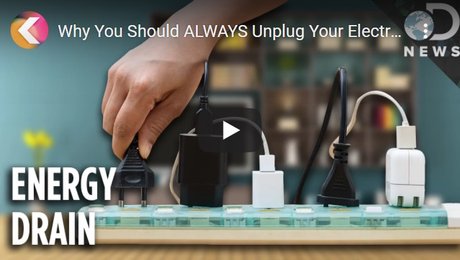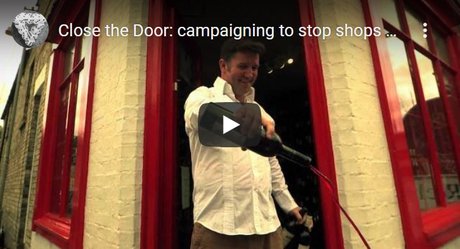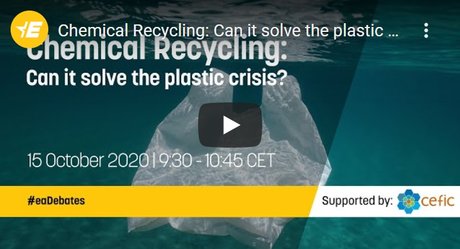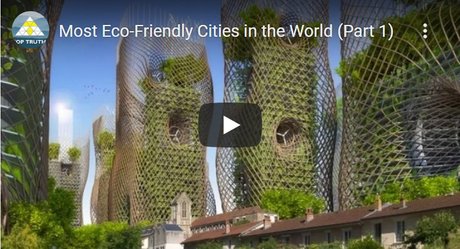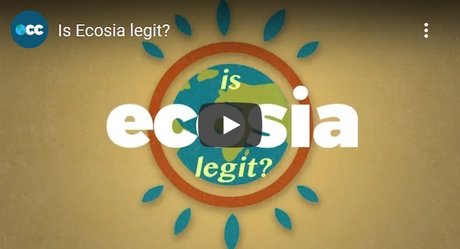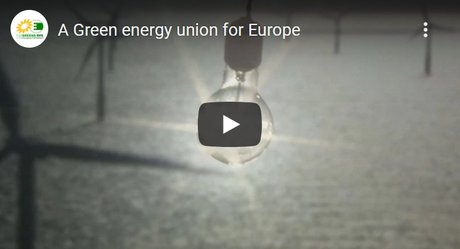SOLUTIONS
We welcome your ideas or suggestions.
Missing a solution or do you have a question?
Stop Providing Subsidies for Fossil Fuel
2019-04-09-european-commission-report-state-of-energy-union
It's unbelievable and most likely criminal but every year massive subsidies are given to the fossil fuel industry. We should invest those subsidies in wind mills, solar power and innovative solutions instead. Stop handing out our money to companies who wreck our environment. Politicians who promote subsidies for fossil fuel companies should be persecuted. ODI research reveals that G20 governments have broken their climate promises, spending $444 billion each year to support fossil fuel production.
EU Commission Report 2019 "(...) A phase-out of environmentally harmful fossil fuel subsidies is necessary to achieve an efficient and effective Energy Union, as recognized by EU commitments in the G20 framework. Between 2008 and 2016, fossil fuel subsidies did not decrease. These subsidies are estimated to be worth EUR 55 billion in 2016, implying that EU and national policies are not yet sufficient to phase them out (...)"
Read more: odi.org/empty-promises
Stop Handing Out Subsidies for Burning Biomass
By including bioenergy in renewable energy targets, the EU is promoting direct and indirect subsidies for it, claiming that it is a sustainable alternative to fossil fuels.
Every year billions of euro's in renewable energy subsidies paid out of a surcharge on our electricity bills – go to power stations burning wood. This is money which should go to genuinely low-carbon renewables such as wind, wave and solar power.
Altogether, far more wood is being burned for electricity than is produced annually in Europe. Far from being green energy, biomass burning makes climate change worse, destroys forests and damages biodiversity. It also harms communities who live near wood pellet plants and biomass power stations and wastes bill-payers’ money on a false solution to our energy needs.
Reporting requirements under the UNFCCC are urgently needed which reflect real emissions and their impact on climate, and to remove the current perverse incentives to import biomass arising from the ability to treat them as zero emissions at the point of combustion. In the meantime, the EU should reform its own reporting requirements under its Emission Trading Scheme to ensure that emissions from biomass are fully transparent and reflect real climate impacts.
Invest in Clean & Sustainable Solutions & Innovation
2018-12-17-european-environment-agency-report-renewable-energy
We should invest the massive amount of subsidies currently given to fossil fuel and biomass burning plants to sustainable solutions as wind and solar power and innovative solutions. This won't be achieved by asking the politicians politely as they have promised change for over a decade without the promised outcome. We will have to hold them accountable as soon as possible and jail them for the disaster which they are causing by stealing our taxes and giving it to the owners and shareholders of dirty billion dollar companies.
EU Environment Agency Report 2018 ""(...) the largest amounts of gross avoided GHG emissions were attributable to onshore wind energy (137 MtCO2), solar PV energy (73 MtCO2) and heat from solid biomass (37 MtCO2). Onshore wind and solar PV energy are also the most significant contributors to avoided fossil fuel consumption and avoided primary energy consumption. In contrast, heat from solid biomass increased primary energy consumption by 3.5 Mtoe. The use of solid biomass for electricity and heating leads to a reduction in GHG emissions [be aware, this claim is under discussion in an ongoing European court case -red] and fossil fuel consumption, but it drives up primary energy consumption (...)"
Use Wind & Solar Power to Generate Hydrogen & Convert Natural Gas Infra
2019-05-03-foresight-hydrogen-northern-netherlands-is-ready
According to The Scientific American, Orsted, Denmark's largest power company, announced it is planning to convert electricity from its wind farms into hydrogen fuel.
They plan to achieve this by using electricity from wind farms to power electrolysis plants. These are capable of splitting water into oxygen and hydrogen that can be used as energy.
The resulting hydrogen would be stored in a natural gas distribution system and used when there's a shortage of wind and sunlight powering the wind farms. Currently, there are 45 projects in Europe working on making power-to-gas conversion technologies more efficient and affordable. According to a study published in February in the journal Nature Energy, the cost of splitting water has lowered by 40 percent, suggesting the technology could become more accessible in the near future. According to Dutch energy consultancy, Navigant, using gas storage networks to support the European power system could help European consumers save up to $156 billion.
Read More: 2019-05-03-foresight-hydrogen-northern-netherlands-is-ready-english.pdf
Only Burn Natural Gas Whiles Investing Every RED Penny in Sustainability
2019-04-09-european-commission-report-state-of-energy-union
While investing every cent of subsidie we can spare into real sustainable solutions like wind and solar power and innovation we should end the burning of biomass, coal and oil and only use natural gas as non renewable fuel source. The latest European Commission State of the Energy Report stated the European Commission has facilitated several rounds of trilateral talks between Ukraine and the Russian Federation aimed at ensuring the uninterrupted transit of natural gas from Russia via Ukraine.
The first deliveries of natural gas via the Southern Gas Corridor are expected to start next year, as a result of the EU’s consistent engagement with all the relevant partners and project stakeholders. The European Commission has also supported the efforts of eastern Mediterranean countries to explore common solutions to bring their significant gas resources to the market. There has been and there will be enough natural gas to be used as intermediate solution for our energy and heat supply so stop the promotion of cutting down forests and burning them!
Read More: 2019-04-09-european-commission-report-state-of-energy-union-english.pdf
Focus on Proforestation to Mitigate Climate Change
Climate change and loss of biodiversity are widely recognized as the foremost environmental challenges of our time. Forests annually sequester large quantities of atmospheric carbon dioxide (CO2), and store carbon above and below ground for long periods of time. Intact forests—largely free from human intervention except primarily for trails and hazard removals—are the most carbon-dense and biodiverse terrestrial ecosystems, with additional benefits to society and the economy.
Internationally, focus has been on preventing loss of tropical forests, yet temperate and boreal forests remove sufficient atmospheric CO2 to reduce national annual net emissions by 11%. Forests have the potential for much more rapid atmospheric CO2 removal rates and biological carbon sequestration by intact and/or older forests.
Proforestation provides the most effective solution to dual global crises—climate change and biodiversity loss. It is the only practical, rapid, economical, and effective means for atmospheric CDR among the multiple options that have been proposed because it removes more atmospheric carbon dioxide in the immediate future and continues to sequester it long-term. Proforestation will increase the diversity of many groups of organisms and provide numerous additional and important ecosystem services. While multiple strategies will be needed to address global environmental crises, proforestation is a very low-cost option for increasing carbon sequestration that does not require additional land beyond what is already forested and provides new forest related jobs and opportunities along with a wide array of quantifiable ecosystem services, including human health.
When compared to forests that have been degraded by large-scale human activities, intact forests are often more resistant to pressures such as fire and drought events and usually less accessible to logging and agricultural conversion. Avoiding the degradation or outright clearance of intact forests (which we collectively term “intact forest loss”) is therefore likely to be an important contributor to the Paris Agreement’s goal of limiting global warming to well below 2°C above preindustrial levels.
Most national governments fail to recognize or prioritize the retention of intact tropical forests as a means of meeting their commitments under the Paris Agreement. Improved recognition in the scientific community thatmost forest degradation processes that follow from the opening up ofintact forests will play out over a period of decades, rather thanoccurring instantly, could potentially allow them to be acknowledgedand better accounted for in emission baselines. Carbondioxide removal will be necessary to limit global warming to 1.5°C above preindustrial levels, yet large-scale engineered solutions to carbon removal on land are unproven and risky. In contrast, intact tropical forests represent a safe and effective way to achieve meaningful carbon dioxide removals and to neutralize emissions from other sources. Sources:
Natural Climate Solutions (NCS)
2019-04-00-natural-climate-solutions-averting-climate-breakdown-by-restoring-ecosystems-english
As there is considerable unexplored potential for NCS, it is likely to be able to make a major contribution towards preventing more than 1.5°C of global heating, in combination with much more ambitious emissions reduction programmes than have been deployed so far.
More research is urgently required, to realise the full potential of NCS.
Examples already researched NCS;
- “Carbon sequestration in tropical rainforests can be enhanced by boosting the populations of certain megaherbivores”
- “There is also likely to be high potential for reforestation in mid-latitudes, where the climate is wet and mild. […] Here too, carbon sequestration can be strongly mediated by wildlife”
- “Though the area of forested and formerly-forested land is much greater, the fastest accumulation of carbon occurs in a different set of ecosystems: vegetated coastal habitats, such as mangroves, saltmarsh and seagrass beds. Here, carbon can be sequestered 40 times faster per hectare than in tropical forests.” (https://doi.org/10.5194/bg-2-1-2005)
- “The restoration of peat domes, mires and fens offers further great potential for carbon withdrawal.”
Urgenda Presents 50 Solutions for 25% CO2 Reduction
The 50-point plan contains 50 measures to comply with the ruling in the Climate case: 25% CO2 reduction before the end of 2020. Together with more than 700 organizations, the 40-point plan was presented and handed over to the Dutch government in June 2019, 4 years after winning the Climate Case in The Hague. The 40 measures are a guide and show that it is possible to reduce 25% CO2 in the Netherlands before the end of 2020. All measures together are good for a reduction of 10 to 15 Mton CO2-eq.
Urgenda Solution Number 1
01 - 100,000 rental houses energy neutral 0.2 Mton
This first measure results in a 100,000 (almost) energy-neutral homes with a (very) small energy bill, of which tenants benefit from day one. The housing corporations can pay that with the amount that they now pay the government because of the so-called landlord tax. This was a temporary tax measure that has never been stopped and will amount to 2 billion in the coming year.
In addition to two improper taxes together, 4 billion, 4 months rent that the government skims. And then they complain that not enough is being done by corporations. It is time for a breath of fresh air, stop the temporary landlord levy, 6 years was enough.
Urgenda Solution Number 2
02 - Fewer cows, no less profit 3.0 Mton
The second measure is shrinking and changes in livestock which results in a reduction of 3 megatons of CO2 eq per year. After the closure of the coal-fired power stations, that is one of the largest measures that can still be taken for the climate.
It also improves biodiversity. However, it is not the intention to let the farmers pay the bill again, because they have been given measure after measure in recent years.
Yet there is a good reason to have another look at the number of cows, because if we do not do that ourselves, then Brussels will probably force us to take far-reaching measures. The Netherlands emits too much nitrogen and still produces a relatively large amount of manure, both of which ensure that we do not meet the EU standards that the Netherlands has signed for.
Nitrogen, of which dairy farming is the largest source, has negative effects on nature reserves, insects, soil life and health. To strongly limit EU standards and the negative effects in 2030, we will certainly have to reduce by 30%: less (artificial) manure, less concentrate and therefore fewer cows or much less milk per cow. To prevent a repetition of 2016, when 160,000 cows suddenly had to go to the slaughter because we did not meet the EU standards for phosphate, we can now take matters into our own hands and make changes in 1.5 years , without the farmer receiving less income.
Part of the solution can lie in having cows give less milk. Cows now give an extremely high amount of milk, which can be reduced by 15 to 20% through concentrate reduction and fertilizer reduction. The remaining 10% reduction will then have to come from a shrinking of the herd and the choice of other cow breeds. We now know that slightly fewer cows and a better balance between the number of cows and the amount of land not only leads to lower produces, but also to lower costs. On balance, the farmer does not have to suffer loss. This offers prospects for more dairy farmers. If we want to make such a big change within two years, then we will have to help farmers, with knowledge and budget to compensate for the loss of income. There are plenty of good examples that deserve good follow-up. A lot of money has now been reserved for tackling the nitrogen problem, 2.2 billion euros alone for improving the quality of nature. Let us use that for the switch to sustainable agriculture.
Urgenda Solution Number 3
03 - Maximum speed on roads decrease 0.2 Mton
A simple but powerful measure can be to lower the maximum speed. It is also a measure that the government can take relatively quickly, at very low costs. It is up to the government how difficult or easy they want to make it for themselves.
Simply going back to 100/120 will result in a 0.2 Mton (megaton) CO2 emission reduction. Slowing down even more can yield 1.2 Mton.
Urgenda Solution Number 4
04 - Scaling up national energy fight 0.2 Mton
The government can encourage healthcare institutions to participate in the 'Energy Saving Competion' or give them a voucher to let an expert walk through a healthcare institution for a day to take all simple measures that can be taken without much money and energy.
That quickly leads to 10-15% savings in a winter season. The advantage of an Energy Saving Competition is that the behavioral change itself is chosen and is experienced as positive and fun and not as an imposed measure.
Urgenda Solution Number 5
05 - Switch off the lighting after working hours 0.3 Mton
Shops and offices still too often leave unnecessary lights on after working hours. Often the lighting is switched on unnecessarily throughout the weekend. It was previously calculated that 536 million kWh of electricity can be saved by switching off unnecessary lighting outside of operating time. That saves 0.36 Mton per year in CO2 emissions.
A timer, sweep switch, motion detection or simply making someone responsible for it, works wonders and is easily earned back.
Urgenda Solution Number 6
06 - Network of semi-autonomous small vehicles 0.5 Mton
There are a lot of delivery vans that together emit 5.3 Mton per year and form a very inefficient form of distribution. Part of these emissions can be eliminated by driving with semi-autonomous electric vehicles, running at the speed of a walker to jogger (5-8 km / h) and the size of a low ice cream cart (80-100 cm wide, up to max. 2 m long, max. 750 kg) drive on the right in the countryside, on holiday parks and industrial sites and transport things that are not in a hurry. The vehicle is full of sensors and learns to drive fixed routes. If there is an unexpected obstacle, then it stops and someone looks at it remotely to see how the cart can get around it.
Urgenda Solution Number 7
07 - Sustainable forest management 0.2 Mton
Trees and forests capture a lot of CO2. Trees and forests are also extremely important for biodiversity. It is therefore important that we treat our forests and trees with care and strive for natural forests with a varied uprising of native trees and shrubs.
Yet many trees are cut down. Sometimes that is not a problem, for example when cutting is done because trees are sick, to come to natural forests or to preserve other nature.
In recent years, however, a lot of wood has disappeared in biomass plants and bark clearing has returned as a control measure for harvesting and growing wood. A piece of forest of about 0.5-2 hectares is cut bare, the litter layer removed and replanted, resulting in a great loss of recorded CO2 and biodiversity. More sustainable forest management benefits biodiversity and can result in a saving of 175,000 tons of CO2.
Urgenda Solution Number 8
08 - Link tenders to savings obligation of 0.4 Mton
The Environmental Management Act has had an energy saving obligation since 1993. This energy saving obligation is defined as the obligation for organizations to take all energy saving measures that pay for themselves within five years or less.
Not all companies and institutions comply with this legal obligation. Those who do so should be rewarded with assignments from the government.
The first Energy Agreement had an energy saving target for 2020 of 100 Petajoules. The National Energy Survey of 2017 (NEV 2017) showed that this energy saving was still 25 Petajoules behind its goal. This 25 Petajoule extra energy saving is equivalent to approximately 1.5 megatons of CO2 reduction. Part of this gap is caused by the non-compliance with the energy-saving obligation for companies.
Urgenda Solution Number 9
Fortunately, the government has already decided that netting will not be stopped in 2020 or 2021, but will be continued until 2023 and then gradually phased out. That's great, because it provides certainty and makes people dare to invest again. Then the market for solar energy can grow even faster. The growth of Solar PV in 2018 was more than 1.4 GWp. In 2019, it is estimated that 2 GWp will be installed. If this continues in 2020, we will go to 6.3 GWp at the end of 2019 and more than 9 GWp at the end of 2020 (estimate Dutch New Energy Research), higher than the government's goal.
If netting continues, then 7 GWp in 2020 should also be easily achievable. So 1 GW extra sun power compared to existing goals. This leads to an additional reduction of approximately 0.4 Mton. This is calculated with the Energy Transition Model.
A scenario with 7 GWp sun on the roof is compared to a scenario with 6 GWp sun on the roof. This extra GWp results in a 0.4 Mton reduction in CO2 emissions (470 g / kWh generated with the extra sun). In this calculation we have assumed only changes in sun on roofs. If the rest of the energy system also changes, this also has consequences for the impact of extra sun on roofs. For example, if the extra Solar PV on roofs causes a coal-fired power station (600 - 1050 g / kWh) to run less, the additional reduction can amount to 0.9 Mton.
Urgenda Solution Number 10
Much has already been calculated on green roofs: cleaner air, more insects, cooling, less painkiller use and many more benefits. But it also delivers CO2 savings.
The Geodienst of the University of Groningen calculated that the 9 largest cities already have more than 40 km of flat roof surface. If we put sedum on it, it saves 0.1 Mton CO2. If we also opt for natural roofs or a combination with solar panels, the savings will increase.
Urgenda Solution Number 11
11 - A day a week without meat 0.5 Mton
If all Dutch people do not eat meat one day a week, Dutch CO2 emissions can be reduced by 0.5 Mton per year. No meat three days a week is in line with the guidelines for healthy food and the Schijf van Vijf and saves no less than 1.5 Mton / year.
Our Western meat consumption has a major negative impact on climate, environment, health, biodiversity and on local communities in soy producing countries.
This is precisely the reason why large institutions such as the United Nations, the Netherlands Nutrition Center and RIVM have been advocating lower meat consumption for some time.
This is also the reason why 30 organizations - from Animal Protection, Docters & Lifestyle to Oxfam Novib - are now asking the government to introduce measures as quickly as possible to help consumers opt more often for vegetable meat substitutes: a financial incentive for meat that is is set to ensure that the lower incomes are not limited more and that the proceeds of the incentive are used to help farmers become more sustainable. Research shows that such an incentive will save millions of euros in health care.
Urgenda Solution Number 12
12 - Accelerated watering peat meadow 0.2 Mton
By raising the groundwater level in peat areas and creating more nature, the Cabinet can save 0.2 Mton CO2 by the end of 2020. The Cabinet's plans for 2030 to raise the water level in peat areas can be implemented at an accelerated rate. In the coming year, it is already possible to get started in the current nature areas with watering the peat, and new areas can be purchased more quickly.
This CO2 reduction measure is relatively cheap and has a major additional advantage: in the short term, more habitat will be created for many animal species that are currently seriously deteriorating. This way, climate and nature objectives are tackled integrally.
Urgenda Solution Number 13
13 - Action plan for electric motors 2.0 Mton
Electric motors account for 62% of industrial electricity consumption. Energy Research Center (ECN now part of TNO) calculated here a realistic saving of 3.78 Mton CO2 through a system approach (combination of better engines, better adjustment, speed and frequency controls, etc.) for the industrial and services sector.
ECN does not yet take into account the potential of contactless magnetic couplings: a promising innovation in electric motors that can yield a lot of extra savings. A concrete action plan for electric motors, which also includes magnet couplings, must be able to deliver at least 2 Mton CO2 savings by the end of 2020
Urgenda Solution Number 14
14 - ISDE increase for small-scale heat 0.1 Mton
The Investment Subsidy for Sustainable Energy (ISDE scheme) for small-scale sustainable heat provides a contribution to both individuals and business users when purchasing heat pumps, solar boilers, biomass boilers and pellet stoves. We would like this subsidie to continue without the biomass boiler and pellet stoves options.
This subsidy was oversubscribed last year. There is a lot of interest in it. It helps people to take steps to make their home energy neutral.
Companies make their business premises more sustainable. There is more room with this scheme to realize relatively cost-effective sustainable heat, in combination with a recruitment campaign. Double this pot for heat pumps and solar boilers next year and combine this with much more public information.
Urgenda Solution Number 15
15 - Extra budget for home insulation 0.2 Mton
Home insulation is a relatively cost-effective way to save CO2 in the built environment. Previous schemes such as the SEEH were also used well and were quickly "empty".
Reopening a scheme such as the SEEH, including a budget of € 100 million for 2019/2020, can lead to more insulation and 0.2 Mton extra CO2 savings. Here too an extra recruitment campaign would help to actually achieve the intended acceleration.
Urgenda Solution Number 16
16 - Stimulation collective solar systems 0.1 Mton
Housing corporations, private landlords and VVEs also want to lay solar panels on their roofs. That is too complicated for them with the current regulations such as the so-called "zip code regime".
Also in the EU it has been explicitly stated that citizens in stacked construction should have the same access to solar energy as people in a land-bound home ("winter package").
For both reasons and to reduce CO2 emissions more quickly, it would therefore be good to accelerate solar energy on collective roofs through a temporary feed-in subsidy of € 0.10 per kWh for a period of two years. The "contracting party" is the housing association, landlord or VVE. They can divide the income fairly among the residents and settle (part of) the costs through the service costs and / or the rent. Until the end of 2020 this measure could lead to MWp of additional installed capacity and in 2020 an additional CO2 reduction compared to 1990 of at least 0.1 Mton.
Urgenda Solution Number 17
17 - Lease contracts for solar panels on a kWh basis 0.1 Mton
Owners of large roofs often do not want to purchase and maintain an installation with solar panels on their roof, but do want to be "unburdened" by another party who lays the panels on their roof and then leases the person who owns the roof. Now those lease contracts cannot be concluded based on the generated kWh, but must be based on a fixed amount per year.
This is because the Environmental Tax Act states that there is no need to pay any energy tax if the generation is done on the roof "for own account and risk of the end user".
With a lease construction, the leasing company has (part of) the bill and risk and is therefore not allowed to settle per kWh. This creates risks for developers, so that much larger projects do not take place. Enabling lease contracts for solar panels to be concluded on a KWh basis and releasing the “for own account and risk requirement” in the Environmental Tax Tax Act (or via temporary policy rules) makes lease contracts fairer, cheaper and more transparent. Until the end of 2020 this measure could lead to an additional 500 MWp of installed capacity and in 2020 an additional CO2 reduction compared to 1990 of at least 0.1 Mton.
Urgenda Solution Number 18
18 - Always count solar panel in energy label 0.1 Mton
When a roof is used by a party other than the building owner for a solar project the PV system does not count towards the energy label of the building. This makes building owners reluctant to make roof space available: they would rather develop their own project on it at a later stage. This causes a net delay.
If the solar panels on a roof can always count towards the energy label, whoever laid them down on that roof, this could lead to an additional 500 MWp of installed capacity until the end of 2020 and in 2020 an additional CO2 reduction compared to 1990 of at least 1990 0.1 Mton.
Urgenda Solution Number 19
19 - Regulation solar panels & remediation asbestos roof 0.1 Mton
Continuation of arrangement combination solar panels with asbestos roofs.The government wants all asbestos roofs to have been removed in 2024, But recently the Dutch Senate has not approved legislation to regulate it.
Perhaps the government can still make it attractive for Dutch citizens to remove the asbestos roofs, by provincial regulations such as "asbestos off, sun on".
For example, by expanding the SDE + with this option. It is also expected that such a system could lead to 500 MWp installed capacity up and until 2020 and causes extra CO2 reduction compared to 1990 of at least 0.1 megatons in 2020. The NVDE made a comprehensive note on this.
Urgenda Solution Number 20
20 - Solar panels on government buildings 0.1 Mton
The government, national, regional and local, has many roofs that are not all filled with solar panels and / or green roofs. Setting a good example, if you require a lot of your citizens, is always wise.
Many roofs of public buildings offer a good opportunity for solar projects: they can do it themselves or provide the roof to local energy cooperatives.A government that takes the energy transition seriously , can easily decide to fill up its own suitable roofs within the next 1.5 years with solar panels.
These PV projects can of course use various incentives (offset, SDE, PCR etc.), but that should not be a prerequisite to get started. In 2020 this additional installed capacity can lead to an additional reduction in CO2 emissions compared to 1990 by at least 0.1 megatons. The NVDE made a comprehensive note on this.
Urgenda Solution Number 21
21 - Spare transformers for sun & wind 0.4 Mton
By using spare transformers (thus releasing the N-1 redundancy requirement) to solar and wind projects, which seem to need grid reinforcement now, can be connected to the grid sooner. In extreme cases, the solar or wind project is disconnected momentarily.
The supply to third parties is not reduced. Currently legislation requires that there is significant spare capacity in the grid so that there is never a moment without power.
In the jargon: The rule is the standard requirement of n-1 or n-2 redundancy when connecting renewable projects. For a lot of wind and PV projects, it is not crucial that their network availability is 99.99%; 99%, or n-0 would also suffice. Rapid adaptation of this requirement in the regulations would directly lead to increased implementation rate of available new solar and wind projects. This is expected until mid-2020 to give 3 GWp of additional connecting opportunities.
Urgenda Solution Number 22
22 - Doubling of shrinkage of the pig sector 0.3 Mton
The government is allocating 120 million euros for a warm clean-up of the pig sector between now and 2023. According to the PBL, this scheme will lead to a reduction of 5% and a saving of 0.15 Mton CO2. But with additional measures and a doubling of the budget, at least 0.3 CO2 can be saved before the end of 2020.
For example, the government can achieve a substantial shrinking of the pig population by helping farmers who have no successor (62%) with a quitting scheme, whereby the released pig rights are destroyed.
A contraction of the sector is inevitable due to the negative impact on climate, environment, animal welfare, deforestation and human health. According to forecasts, 70% of all pig farmers will stop between now and 2030. At the same time, it is expected that the number of pigs will only shrink by 10% in 2030. The remaining farms are expected to be many times larger than they are now. In line with the LNV vision for circular agriculture and in the context of the nitrogen deposition, it is wise to shrink the number of pigs with the number of farmers. This would amount to 7 to 8 million less pigs and more than 1.5 Mton CO2 savings in 2030.
Urgenda Solution Number 23
Saving energy and solar panels reduce CO2 emissions and are the stepping stone to further sustainable measures for the school building. In combination with education about sustainability for the children, this contributes to a new conscious generation. That is the basic idea behind this measure.
A measure that pays off, because the radiation effect of solar panels in sustainable schools is great: the green awareness is spreading from children to parents and to the neighborhood around the school.
For schools that do not know how to get started, there is help and for school boards that are short of cash, a loan is available. A personal letter from Prime Minister Rutte to all 1,260 school boards can help with the acceleration, because many schools do not yet know this program.
Urgenda Solution Number 24
24 - LED lighting in companies and greenhouses 1.0 Mton
The House of Representatives passed a motion by a large majority to oblige companies to use LED lighting only by 1 July 2020 at the latest. By accelerating the implementation of this motion and making LED lighting mandatory as of January 1, the government can save 0.9 Mton CO2 by the end of 2020.
Help for growers who want to switch to LED in the form of a loan will lead to even more in 2020 once 0.1 Mton saving. The purchase of LED lighting pays for itself through a lower energy bill and can therefore count on broad support.
Urgenda Solution Number 25
25 - Different Ways to Travel coalition 1.0 Mton
CO2 emissions in the Netherlands from commuting and business traffic by car amounts to no less than 8.8 Mton (2016). Dozens of large companies with nearly 300,000 employees have joined forces in the Different Ways to Travel coalition.
They want to encourage more sustainable travel and thereby reduce their CO2 emissions, among other things. In a report from March 2018, CE Delft has calculated the effects on emissions of various measures.
A number of these measures can also lead to a substantial reduction in emissions in 2019 and 2020. The following three measures would result in nearly 3 Mton fewer emissions in the longer term. 1 Mton should be possible in the short term of 1.5 years:
- Behavioral campaigns
- Reduced fee 0.19 / km for car use, for everyone
- Reimbursement for bicycle kilometers of 0.19 / km
Urgenda Solution Number 26
26 - Balancing heat installations companies 0.5 Mton
For the proper functioning of a climate installation it is important that the air quantities in an installation are brought into line with the design values. In addition, proper water-side adjustment is also very important in all kinds of heating installations to make the installation work efficiently.
Poorly tuned devices use too much energy and cause unnecessary CO2 emissions. The technical potential for utility construction is between 20 and 30 Petajoules. For the next 1.5 years, the savings could amount to 12 to 16 Petajoules, rounded down this leads to 0.5 Mton CO2 reduction.
Urgenda Solution Number 27
27 - Tires with a pressure of 0.2 Mton
If half of the drivers start inflating their tires correctly every two months, this will save 0.2 Mton CO2 per year. It also saves 100 euros per year per car (or 400 million euros in total!). Most people don't know that they can save 100 euros by pumping up their tires for 10 seconds every now and then.
Better communication about this is important. 60% of all cars drive with low tire pressure. By placing 2,500 smart tire pumps at companies, gas stations and supermarkets and by providing clear explanations, motorists will be able to adjust their tires better and more often.
A project where, for example, people who are at a distance from the labor market or sellers of homeless newspapers can earn something by operating the tire pump could be a nice extra source of income for them. If people save 100 euros a year, then a couple of euros for the "tire tensioner" can get rid of it? The regular air pumps at gas stations often do not work well enough. The new tire pump is easy to use with the touchscreen and helps with smart software even by typing in the license plate number directly to find the correct tire pressure. Tougher tires not only generate money and CO2 benefits, they are also safer and lead to less wear and tear, resulting in fewer microplastics ending up in the environment, and reducing traffic noise.
Urgenda Solution Number 28
28 - CO2 Performance ladder 1.0 Mton
Measure 28 has been drawn up with the Foundation for Climate Friendly Entrepreneurship and Public Procurement (SKAO). For saving 1.0 Mton CO2, measure 28 proposes that companies, organizations and governments with a medium to large size should introduce a professional CO2 management system in 2020.
According to a first estimate of the proposed measure for the mandatory introduction of a CO2 management system, this means a doubling of this saving potential.
This corresponds to approximately 1 Mton extra CO2 reduction. The proposal is in line with the Environmental Management Act (Wet Milieubeheer). It states that all companies that consume 50,000 kWh of electricity or 25,000 m3 of natural gas (equivalent) per year are obliged to report their energy-saving measures. Companies that consume 200,000 kWh of electricity or 75,000 m3 of natural gas equivalents on fuels per year are obliged to do their own research.
Urgenda Solution Number 29
29 - Campaign for CV optimization households 0.4 Mton
If Many central heating boilers from private individuals are not properly adjusted on the water side and are therefore not running efficiently. A national campaign to encourage people to have their installation checked and to train installers to do this really well are part of this measure. Explaining how much cost people can save with better adjustment is very important.
This measure is quickly earned back. The technical saving potential in the entire housing stock is somewhere around 30 to 35 Petajoules. A saving of 0.4 Mton could be achieved for the next 1.5 years if a third of people with a central heating boiler has their system adjusted better.
Urgenda Solution Number 30
30 - MOT for buildings 0.1 Mton
A periodic check on the actual energy performance of buildings, a kind of MOT test or Energy Performance Inspection (EPC), would save in the next 12 to 18 months in the magnitude of 0.1 to 0.2 Mton (5 to 8 Petajoule). An EPK can be implemented quickly and easily, without changing legislation. The EPK would relate to all establishments under the Activities Decree 2.15 regime and / or all buildings with a use surface of more than 500 m2.
An EPK is needed to close a gap in current policy, focusing in particular on theoretical average performance of individual energy-saving measures, which rarely show this performance in practice.
Urgenda Solution Number 31
31 - City tax for a livable city 0.1 Mton
If In order to make the city of London livable again within the ring, the Congestion Charge was introduced in 2003. This area is still one of the largest in the world where this system exists. This is a toll system whereby cars in the central area within the ring - the Congestion Charge Zone - have to pay an amount per day between 7 a.m. and 6 p.m. (this was 10 to 12 pounds).
The toll is charged via a license plate recognition system. Electric and very clean vehicles pay less than dirty diesel cars and buses.
This has been further refined, since 2015 there are no more exceptions and only fully electric vehicles are spared. Now people are also going to favor sharing, so that people are alone in a car less. According to the Amsterdam Climate Neutral Route 2050 (January 2019), emissions from transport are 360 kilotons per year, ie 0.36 Mton. A test in five cities within the ring (with a scan on all exits) should be possible with financial support from the government. Five Dutch cities that together have a conservative estimated 1.5 Mton in transport emissions. Suppose that the car kilometers, just like in London, decrease by 11%, then - very conservatively - it should be possible to reduce 0.1 Mton CO2.
Urgenda Solution Number 32
32 - Innovative Chemical Recycling Techniques 0.2 Mton
Chemical recycling could in the short term be a good addition to mechanical recycling for plastic waste. In both the new Coalition Agreement and in the transition agendas for the circular economy, chemical recycling is seen as an important solution for making the plastic chain more sustainable.
On behalf of the Ministry of Economic Affairs, CE Delft has calculated that a saving of 0.2 Mton is already possible in 2020.
The government can make this technique if they were to:
-include monomer chemical recycling in the plastic recycling targets;
-include chemical recycling feedstock with a factor of around 50% in the plastic recycling targets;
-make a subsidy for investments in chemical recycling possible under the new SDE ++ subsidy scheme;
-increase the recycling targets for plastic, including in the packaging framework agreement;
-give chemical recycling a better place in the national waste plan (LAP3) in terms of recycling quality. 240,000 tons of suitable material from households
Urgenda Solution Number 33
33 - Doubling power energy cooperatives 0.1 Mton
Strengthen the zip code scheme and double sustainable energy projects. The government has given the Regulation for a Reduced Tariff (RVT) - the postal code arrangement in the popular language - as an instrument to energy cooperatives to help realize (local) sustainable energy projects.
This tax arrangement is based on supplying energy without energy tax and the VAT on it to members of the cooperative. It is a beautiful and successful instrument to let citizens benefit from the energy transition and to motivate them for it.
If the current trend continues, 74.5 MWp will double in 2014 to 142.7 MWp in 2019 and grow to 280 MWp in 2020. Corporations expect 250 MWp extra growth if there is a fixed fee for postal code boxes, which leads to an additional reduction of 0.1 Mton CO2 emissions in 2020. For the longer term, sustained growth from the bottom-up movement can be helped by two measures.
Urgenda Solution Number 34
34 - Action plan from single to HR ++ glass 0.2 Mton
n the Netherlands, more than 1 million homes have single glass, an average of 20 m2 per home. Replacing this 20 m2 with HR ++ glass costs almost 3,200 euros.
That is a major investment for citizens, but they save 460 euros a year in energy costs, so it is recovered in 7 years. With a special ISDE subsidy for replacing single glass over the next 1.5 years, 250,000 households could be tempted to make the move.
Measure 34 proposes to offer 1,000 euros per household through an ISDE subsidy, so that the payback period of the citizen becomes around 5 years. Saving On average, the saving of replacing single glass with HR ++ glass is 800 kilos of CO2 / year (source: MilieuCentraal) per home. With 250,000 households, that means a profit of 0.2 Mton. Cost Tackling 25% of the houses in 1.5 years amounts to 250,000 times € 1000 subsidy via ISDE is 250 million euros.
Urgenda Solution Number 35
35 - Forests, trees and roadsides 0,1 Mton
If Where industry is looking for modern technologies to capture CO2, the very best and cheapest technology has already been invented: trees. In particular, forests capture a lot of CO2 in the soil and in the trees themselves.
But individual trees also absorb CO2, provide cooling and help with water storage. More trees and more green space is therefore already included in the Climate Agreement. Measure 35 is threefold: speeding up the plans for more forest and trees, and better use of verges. This measure is supplementary to measure 7: more sustainable forest management of existing forests.
Urgenda Solution Number 36
36 - Stopping recreational use of laughing gas 0.1 Mton
Laughing gas (N2O, nitrous oxide) is a very strong greenhouse gas: 1 kilo of laughing gas has the same effect as 265 kilos of CO2 according to the latest insights (see the adjacent table and also Milieu Centraal).
It is released, among other things, from soil that has been fertilized with artificial fertilizer or animal manure. It is also used as anesthetic gas in anesthetics and in engines to increase engine power.
The laughing gas patterns and balloons that are used "in the recreational atmosphere" are in fact lying en masse on the ground in cities, on festival grounds and in all kinds of other places where people come together to party. However, more and more car accidents seem to be associated with the use of laughing gas. And that laughing gas is a strong greenhouse gas is very clear. The increase in laughing gas imports appears to be almost entirely due to "recreational use." That is 500 tons of laughing gas extra and that equals 0.1 Mton extra CO2 eq emissions. The government can reduce 0.1 Mton emissions year after year if this form of laughing gas use is reduced.
Urgenda Solution Number 37
37 - More sustainable asphalt 0.1 Mton
The Netherlands has one of the most densely branched road networks in the world. Of this network there are around 130,000 kilometers of paved road. As the largest client in the civil engineering, road and hydraulic engineering sectors, the government can set conditions for more sustainable asphalt in tenders.
Realistic in 2020 is a saving of 0.1 Mton CO2 through the construction of cycle paths of biobased asphalt, more use of asphalt made at a lower temperature, more reuse of raw materials from old asphalt and measures to extend the life of asphalt. This measure was written in collaboration with BAM (points 1 to 3) and Miscancell (point 4).
Urgenda Solution Number 38
38 - More use of 0.1 Mton olive sand
If CO2 Open (climatecleanup.org) is the window on the emerging sector of natural climate solutions such as seaweed farming, forests and soil improvement.
To the 40-point plan, we are adding a solution with great potential that can clean up a lot of CO2 by 2020: the use of olivine sand. Olivine cleans up CO2 through natural weathering, in which it reacts with CO2 and the carbon is captured for a very long time.
Olivine is a mineral that is common in the world (at least a quarter of the earth's crust). By grinding it to sand, the natural weathering reaction is accelerated. Taylor et al. (2016) estimate that this method can potentially reduce CO2 concentration by 30 to 300 ppm (the current CO2 concentration is around 415 ppm). In the Drawdown study (Paul Hawken, 2018) olivine is mentioned as a promising climate solution.
Urgenda Solution Number 39
39 - Government campaign "it is possible"! 0.5 Mton
IfIn the short term, most can be achieved with energy saving. This can be done in many ways, with households as well as with offices, farmers and industry. In the past year, the population of the Netherlands has gotten the idea that "the energy transition" is a large, stubborn, money-consuming monster that does not produce anything.
It is time for a good multimedia campaign: "it is possible", which shows that saving energy or choosing other sustainable solutions is fun, can generate money and often also leads to more health, quality of life, biodiversity and wonder.
How can we get and interest a large part of the population? Tell the stories about the great solutions and what they deliver. Show what is already possible and how nice it is. Show young people who find more sustainable living very normal. Such a campaign can take many forms, of course, but we will provide a series of ideas for inspiration.
- Surprise Dutch people with a saving package
- Promote the CO2 Open - www.climatecleanup.org
- Promote the CO2 Calculator
- Start the E-team
Urgenda Solution Number 40
40 - Innovations with potential 0.1 Mton
There are many innovations that want to scale up quickly. In the short term of 1.5 years, the effect on CO2 reduction is still relatively small, but before 2030 they can make a much greater contribution. To speed up the transition, it would help if those innovations come to fruition faster.
We mention a few here, which together lead to 0.1 Mton even before the end of 2020, but certainly have a lot of potential afterwards.
-More durable paper
-paper process without water
-extra energy saving in transition phase
-Tocardo, energy from tides
-Wiras the more efficient rail change
-Building with hemp
-Deep geothermal energy
Urgenda Solution Number 41
41 - Free LED for minimums 0.3 Mton
One in five families has money concerns and the financial barrier for them buying LED can be removed. This measure proposes to give families with lower incomes LED lamps worth € 50, and in this way a 0.3 Mton CO2 reduction can be achieved in 2020. And secondly, this also helps to reduce housing costs. So double the benefit! We propose to arrange this via the municipalities by expanding the current RRE scheme for municipalities.c
Urgenda Solution Number 42
42 - Standby consumption 0.1 Mton
Some appliances also use energy while on standby or "off", but the plug is still plugged in. This is called standby consumption. A household on average spends 450 kWh on standby consumption yearly. That is 100 euros per year (figure for 2019, 22 cents per kWh). Three quarters of this can be avoided by really switching off the appliances: When all computers, TVs and VCRs turn off when not in use, instead of on standby, every household can save 225 kWh of energy. Feed-through plugs are an easy way of avoiding standby consumption without having to unplug your machines every day.
Urgenda Solution Number 43
43 - Redeeming action plan for refrigerators 0.4 Mton
Old fridges and freezers consume much more energy than new fridges. 10-year old refrigerators consume 220 kWh or € 50 / year more than a new one. The proposal is to exchange 1 million old refrigerators and freezers for a newer one with a one-off major campaign: consumers are urged to return their 10 years or older refrigerator for a fee of, for example, € 35 euros when purchasing an A +++ fashion model. This system also proposes that the consumer will pay a recycling fee. Half of the recycling fee consists of a deposit (a return premium) that the customer will receive back if he / she returns an old refrigerator with purchase. 0.4 Mt is saved through energy savings. The recycling contribution ensures a saving of 0.28 Mt through correct processing and correct material reuse.
Urgenda Solution Number 44
44 - More strict control of F-gases 0.1 Mton
Refrigerants are used in cooling installations and heat pumps. These are often F-gases, fluorinated gases, but natural coolants such as water, ammonia, CO2, isobutane and propane are also possible [ii]. F-gases are synthetic and come in many forms, many of which have been banned in recent years due to its effect on the ozone layer and climate. Some F gases have a greenhouse effect that is 4000 times stronger than CO2. One major leak at a large installation with a strong greenhouse gas can even lead to an emission of 0.02 Mton CO2-eq. Yet hardly any checks are carried out in the Netherlands. Stricter controls and fines make it more attractive for end users to replace old installations more quickly with more environmentally friendly ones and thus avoid leakage with old installations and with strong greenhouse gases. Or to convert installations so that they function on a refrigerant with a lower GWP (retrofit).
Urgenda Solution Number 45
45 - Less N in agriculture 0.25 Mton
Nitrogen fertilizers cause approximately 8% of the national ammonia emissions and are good for a CO2eq emission of almost 2 Mton. The production and use of nitrogen fertilizers cause severe climate damage due to the emission of nitrous oxide, methane and CO2. The damage to nature by ammonia and ground and surface water by nitrate is great. Circular agriculture is the long term solution but the Urgenda gives us many short term solutions. Go to their website to read them all. Savings: 0.25 Mton per year.
Urgenda Solution Number 46
Open shop doors in winter lose as much energy as 180,000 Hong Kong flight returns. A shopkeeper from Amsterdam says in the same article that a smart sliding door saved no less than € 4,500 on the energy bill. Retailers keep their doors open in the winter to attract customers. Municipalities can force retailers to keep doors closed via an APV, but this is not happening anywhere yet. On the other hand, the Cabinet must offer loans to retailers who want to invest in this. Enforcement of the Environmental Management Act is desirable for larger companies. At least 0.3 Mton can be saved with this measure.
Urgenda Solution Number 47
47 - More ambitious plastic plan 0.2 Mton
The production of plastic causes a lot of CO2 emissions. Increase the pace of the introduction of a mandatory share of biobased and / or circular plastic in all plastics that are used in the Netherlands from approximately 15% now to 45% in 2025 with an intermediate target of 30% in 2022. In 2022, this would be approximately 1.2 Mtonnes of CO2, in 2025 approximately 2.1 Mtonnes. In 2020, the first 0.2 Mton can certainly be achieved.
Urgenda Solution Number 48
48 - Innovations in the transport sector 0.2 Mton
Firstly, a new tire gel Ride-On ensures that tires remain under pressure and that they are less likely to puncture. Flat tires are a major cause of traffic jams and since the Dutch transport sector suffered 1.4 billion euros in traffic jams in 2018, they should embrace this gel. Another innovation is the SolarOnTop solar panel system from IM Efficiency. These provide considerable fuel savings because the alternator no longer needs to generate electricity during the journey and the engine is less loaded.
Urgenda Solution Number 49
49 - Green and healthy living 0.1 Mton
More greenery in the city ensures cooling, better drainage, cleaner air, more biodiversity and happier and healthier people. And it is important for CO2 storage. Each new-build 75 m2 house must have a park within a radius of 500 meters. Decontamination of gardens can give us extra nature the size of the Veluwe. 3% decontamination of the public space and industrial estates citizens must be supported with more green and healthy living by local green-blue education points. Savings year 1 0.1 MTON Savings year 2 0.2 MTON.
Urgenda Solution Number 50
50 - Clear out your Data 0.5 Mton
We propose 5 measures: Encourage more servers to go to eco mode, following Amsterdam's initiative. Organize National Data Clearance Days: every 500 TB cleared from a Cloud service saves 1,000 tons of CO2-eq. Ask all government agencies to clean up data regularly and put infrequently used data on idle servers. Enter green hosting for all government websites. Install Ecosia as a green search engine on government servers. Saving 0.5 Mton
Urgenda Solution Number 51
51 - Change Anaesthesia 0.5 Mton
Replace inhalation gases and vapors with intravenous anesthetics where possible. Both work similarly and from a medical point of view there is hardly any difference in outcome between patients who have had vaporous or intravenous anesthesia. The commonly used type of anesthetic gas Desflurane is a 6,810 times stronger greenhouse gas than CO₂ (over a period of 20 years. In contrast, the CO₂ footprint of the intravenous agent, Propofol, is negligible. A second proposal is: Lower the air treatment of operating rooms when not In the operating theater, the air must be refreshed 20 times per hour If the air exchange is switched off in ORs that are not in use, energy consumption can be reduced by 50%. Savings are 0.1 Mton. In addition to this Urgenda solution, we, together with the Green Energy Union, encourage hospitals to switch to green electricity without biomass.
Urgenda Solution Number 52
52 - Voltage Optimization 0.5 Mton
In the Netherlands, the voltage level (230 Volts) is higher than the optimum voltage for appliances: at 220 Volts they consume less energy and last longer. Wherever the mains voltage on average exceeds 227V, voltage optimization can save energy. This is possible with the Powerstar. The cabinet can make an inventory of the energy savings that the Powerstar can deliver to all Dutch water purification companies and apply this. It can also investigate which voltage optimizers qualify for the list of Recognized Energy Saving Measures. The cabinet can inform the municipalities and provinces about the possible energy savings in, for example, their own offices, data centers, hospitals, swimming pools and households, etc. The consumer receives a free cube and pays it back unnoticed in 10 installments via energy bill, after which the energy bill decreases by 10%. Savings year 1: 0.5 Mton. Savings year 2: 2 Mton.
Urgenda Solution Number 53
53 - Shrinkage in calf, goat and sheep sectors 0.2 Mton
The cabinet is earmarking € 180 million for a warm reorganization of the pig sector in order to reduce CO2 and nitrogen emissions and the smell. At the same time, the veal calf, goat and sheep sectors are growing, which together account for more than 2 Mton in CO2 emissions and cause the necessary nuisance. Urgenda proposes to limit these sectors as well, to monitor them better and to remediate them warmly. These sectors together account for more than 3 Mton CO2 emissions. In year 1 a reduction of 0.2 Mton is feasible and 0.3 Mton in year 2. This will also reduce methane emissions.
Urgenda Solution Number 54
54 - Extra Subsidies for Sun on Roof 0.5 Mton
Failure to meet the sustainable energy and CO2 targets will cost the Dutch government a lot of money: due to the fine announced by European Commissioner Timmermans and through the purchase of empty "statistical transfers" abroad. The thousands of sun-roof projects that have been rejected offer an excellent opportunity to prevent or limit this. After all, under the SDE + scheme, solar-on-roof projects must be completed within a year and a half. An investment of 55 million euros saves0.5 Mton in the first year and 1 Mton in the second.
We have collected and read all the research reports and official documents from the past decades and have started to make summaries for each subject and published the summaries on the following pages:
Biomass Research Abbreviations
Biomass Research Carbon Dioxide
Biomass Research Certification
Biomass Research Sustainability

